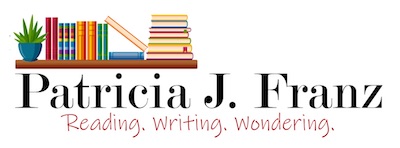
The checkerboard Zoom screen is not how most of us imagine a child’s first weeks of school. But due to shelter-in-place restrictions last fall, instead of gathering 26 squirming bodies to the rug of her brightly decorated classroom, Teresa Sorensen, in her 34th year of teaching, positioned a picture book under her newly purchased “dot-camera” and prepared her kindergartners for reading time. “They wriggle up close to the screen and are glued, mouths open.”
It’s a familiar response when we encounter something new or rare. Sorensen confirms: Parents don’t read enough to their kids.
According to the National Commission on Reading, the single most significant factor influencing a child’s early educational success is an introduction to books and being read to at home prior to beginning school.
Tim Murray, a reading specialist for 31 years insists the foundational elements for early literacy form a three-legged stool. If any one of them is weak or missing, the stool will not stand firmly.
1. Language
The most important aspect of parent talk is its amount. Parents who just talk as they go about their daily activities expose their children to 1000-2000 words every hour. (1)
Children need to hear words, early and often. The more words, the better. Language connects us to one another, making communication the very heart of literacy. And this process begins well before a baby can speak. Early vocabulary growth begins when parents speak frequently to their infants. Language ability begins with children hearing and then attempting to converse.

2. Exposure
An analysis of nearly 100,000 U.S. school children found that access to printed materials is the “critical variable affecting reading acquisition.” (2)
Murray passionately insists: “Love of story must start young!” Children first need access to books and then they need to hear stories read to them.
When I was growing up, we had what we lovingly referred to as “the big box of books.” It was filled with Little Golden Books that were read to us over and over again. If we were sick and stayed home from school, we got the big box of books all to ourselves. When I turned 8, I got my first library card. And on Friday nights, our entire family would head to the library where we each could check out 5 books of our own.
3. “Text-to-Self” Connection
(and no, this is not referring to sending yourself a reminder from your phone.)
Text-to-self connections help a reader link what is being read with the reader’s own life. Murray urges grownups to find books at every age of a child’s development that connect the story, the character or the adventure to the child’s life. Examples would be:
- books that “look like me” – my race or ethnicity, the make-up of my family, where I live
- experiences I have had – starting school, moving to a new city, visiting my grandparents
- books that evoke a wish or fantasy I have – wanting or loving a pet, being an astronaut, time travel
Daniel T. Willingham, professor of psychology at the University of Virginia and the author of Raising Kids Who Read makes it clear: “Read often. Read everywhere. Read for fun. Read fiction. Read nonfiction. Explore different topics… follow their curiosity.”
Today, the ipad, youtube, and audiobooks make it all too easy to outsource reading to our children. Busy parents may be tempted to opt for one of these options. If you’re already reading to your child, the additional audio and visual repetition can build a child’s familiarity with sight words and their ability to decode unfamiliar words. But don’t let this be the first or the only method of building a reader.
There is no substitution for the lap or shoulder-to-shoulder bonding that happens when a child and grownup settle in together to read.
Reading is an education to wonder. And with a library card, it’s free! So read to your child at every age. It will be an invaluable gift.
1. Hart and Risley (1999) The social world of children learning to talk.
2. JMcQuillan, J. (1998). The Literacy Crisis: False Claims, Real Solutions.Heinemann.

 Patricia Franz is a kidlit writer and published poet. She believes children, dogs, and sourdough have a lot to teach us about life, joy, and wonder. She has raised two boys, four dogs, and holds a master’s degree in Theology with a focus on children’s spirituality. Patricia, her husband, her Bernese Mountain dog, Bonny, and her sourdough starter split their time between the Arizona desert and the Sierra Nevada mountains.
Patricia Franz is a kidlit writer and published poet. She believes children, dogs, and sourdough have a lot to teach us about life, joy, and wonder. She has raised two boys, four dogs, and holds a master’s degree in Theology with a focus on children’s spirituality. Patricia, her husband, her Bernese Mountain dog, Bonny, and her sourdough starter split their time between the Arizona desert and the Sierra Nevada mountains. 